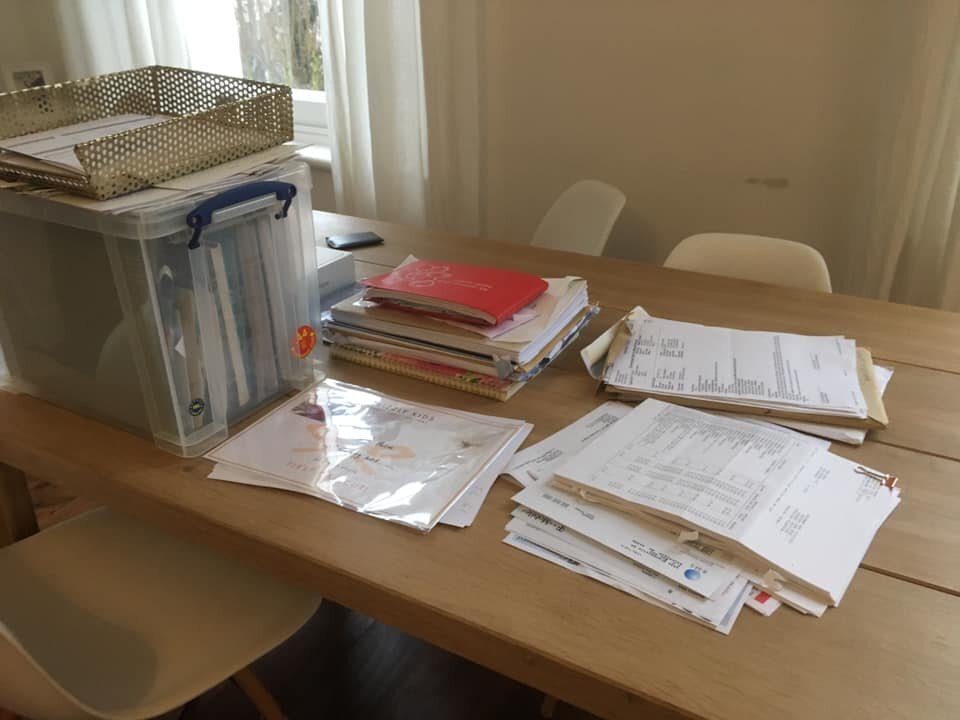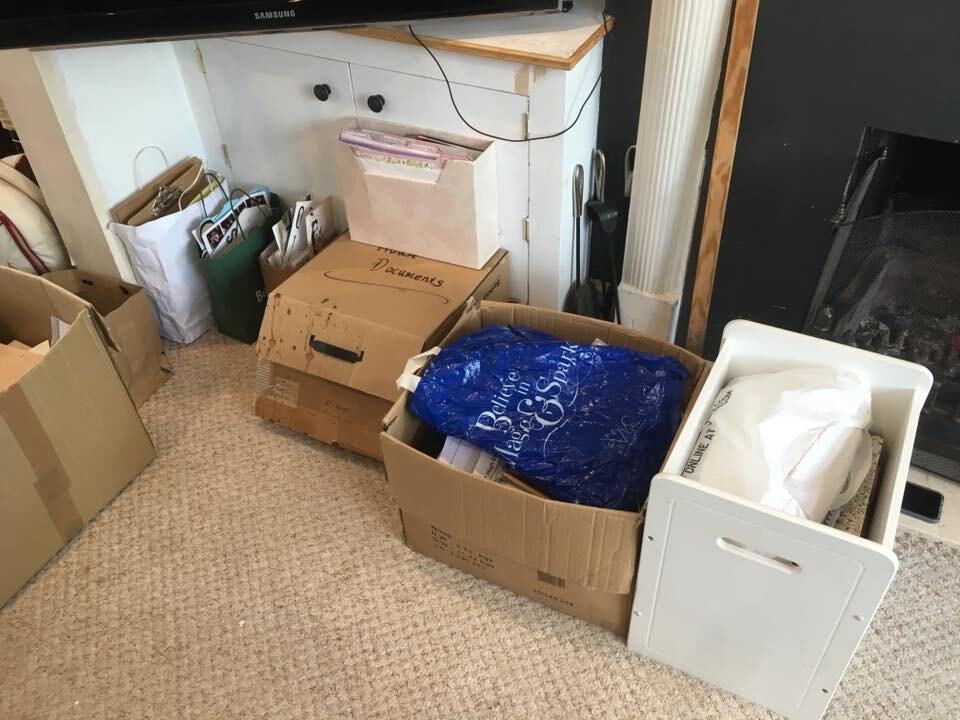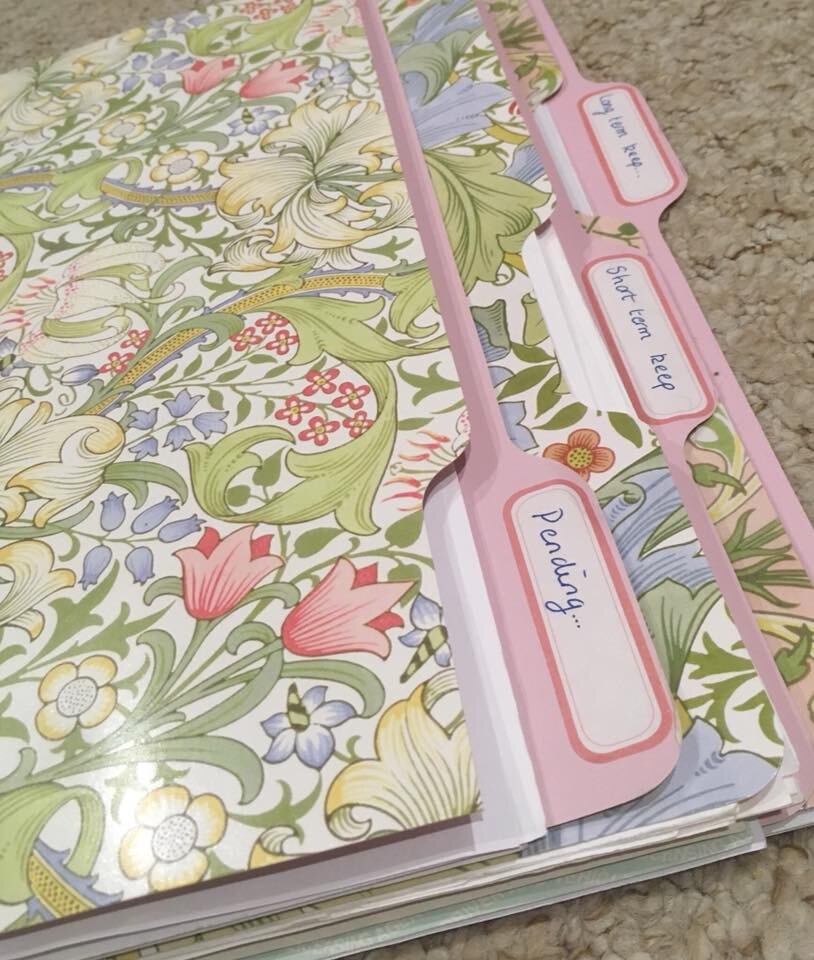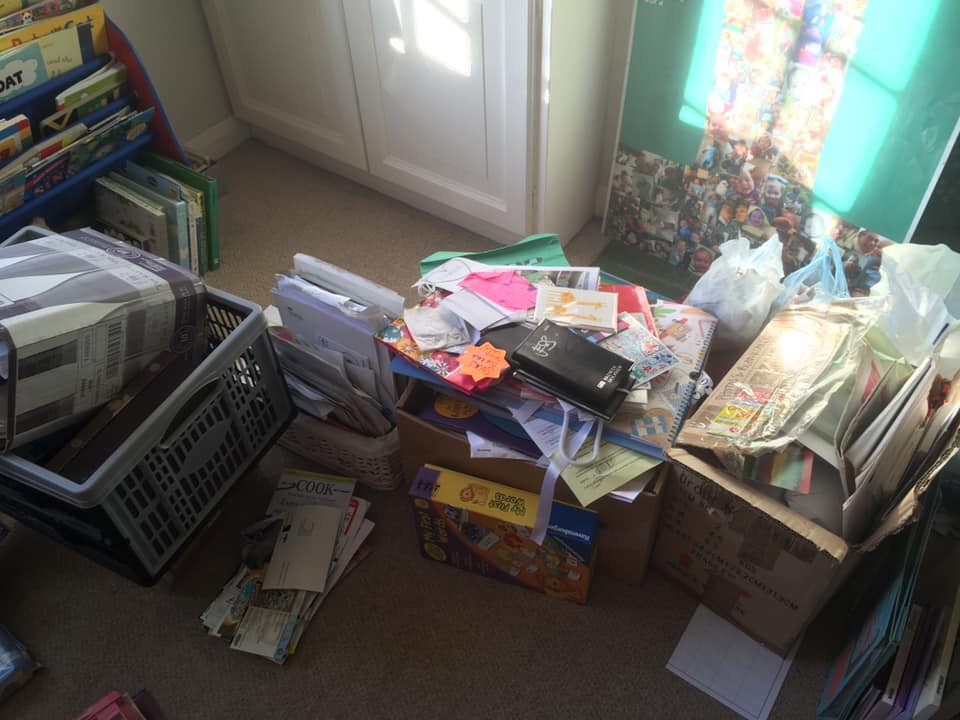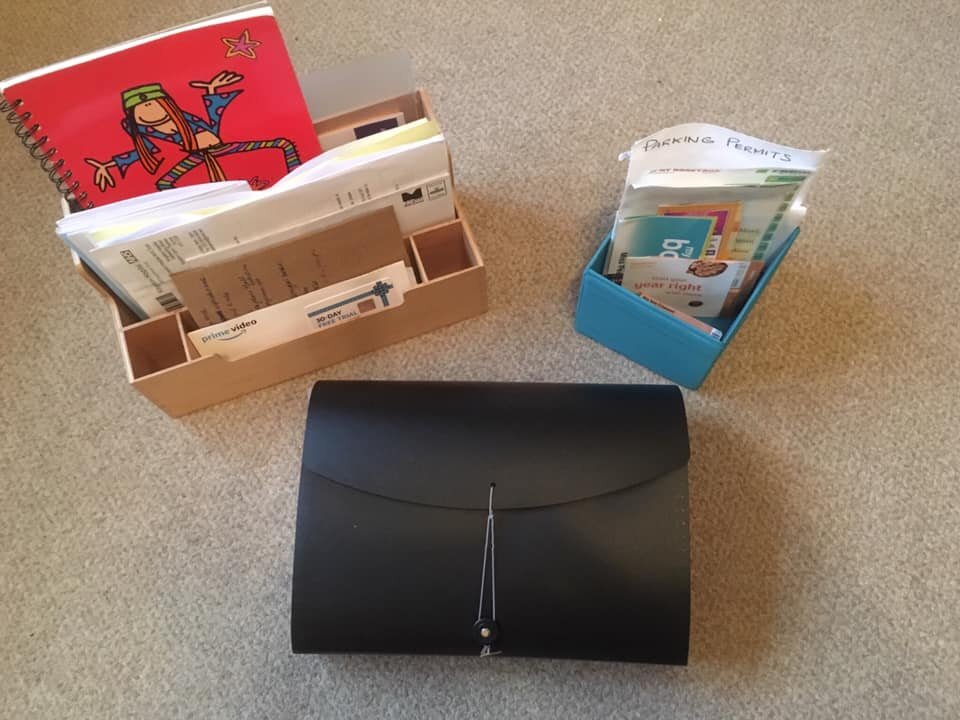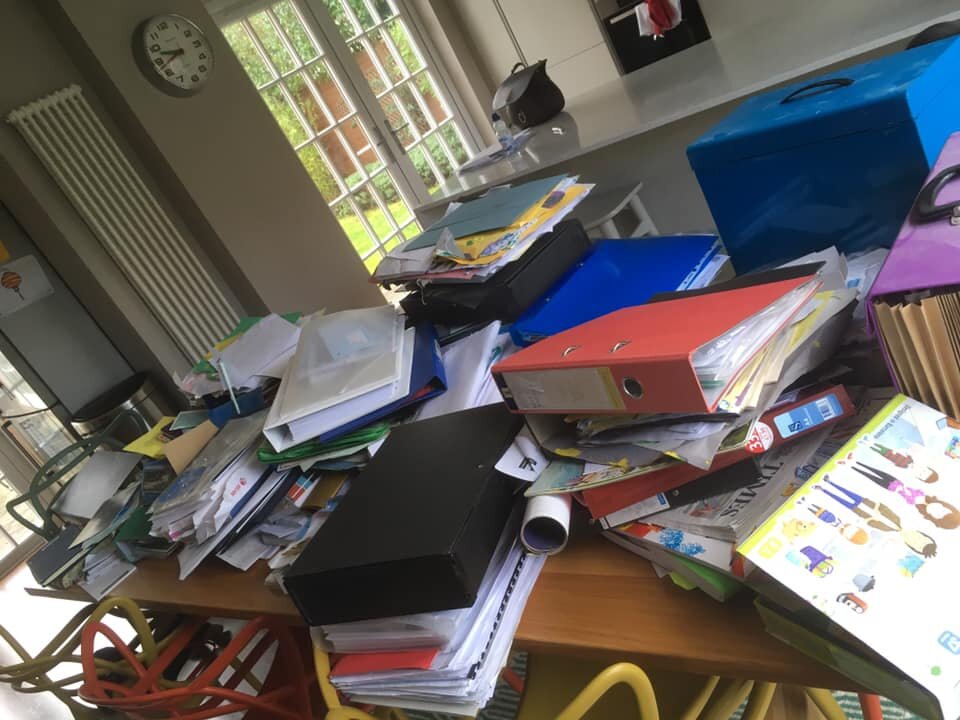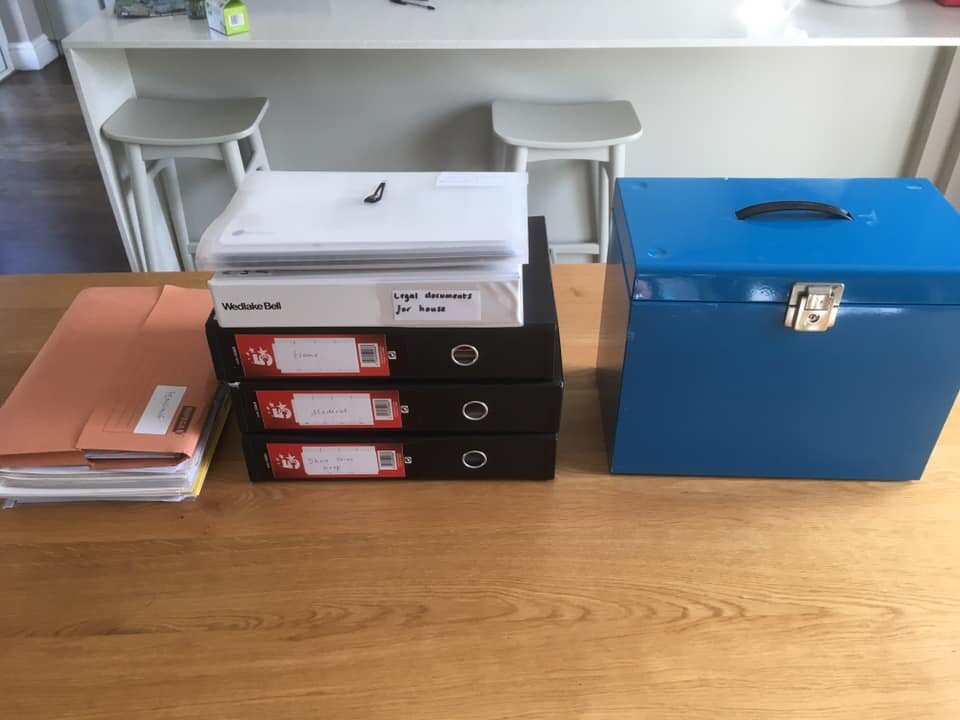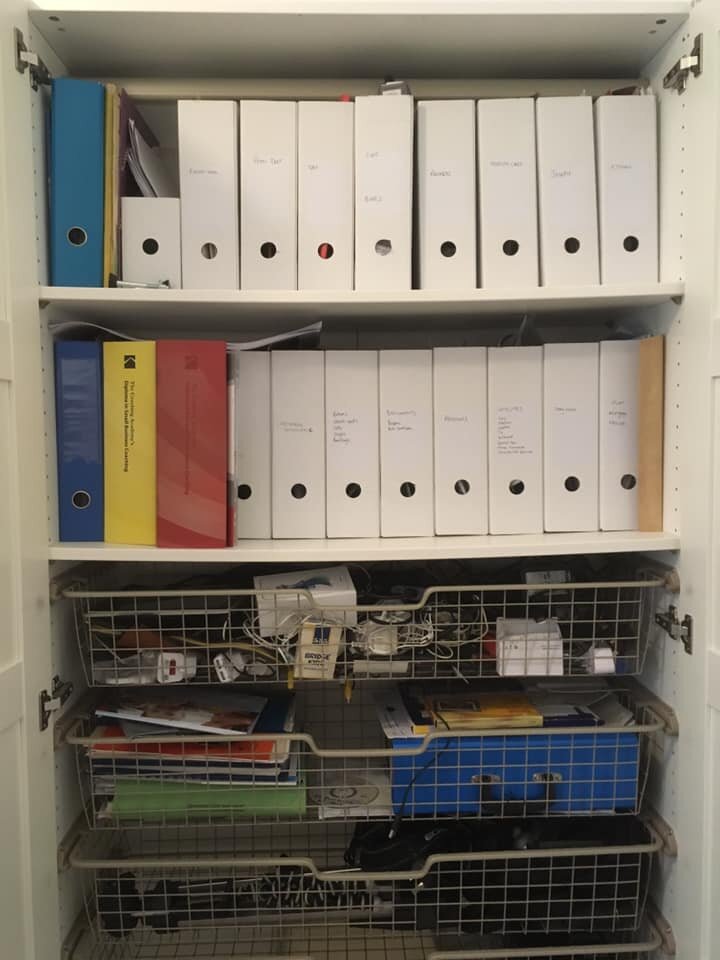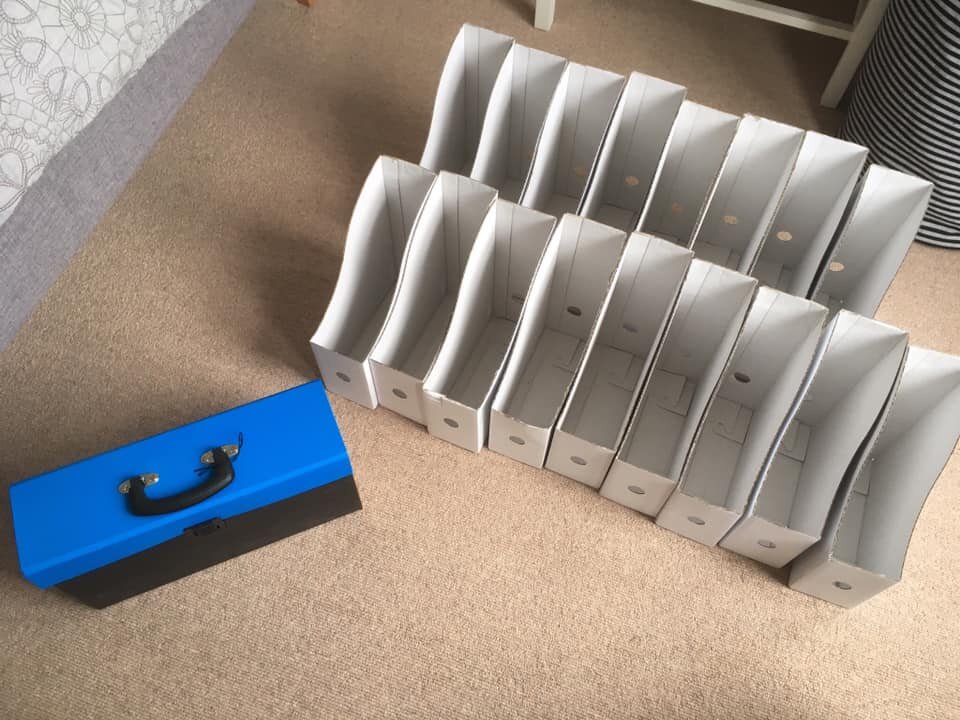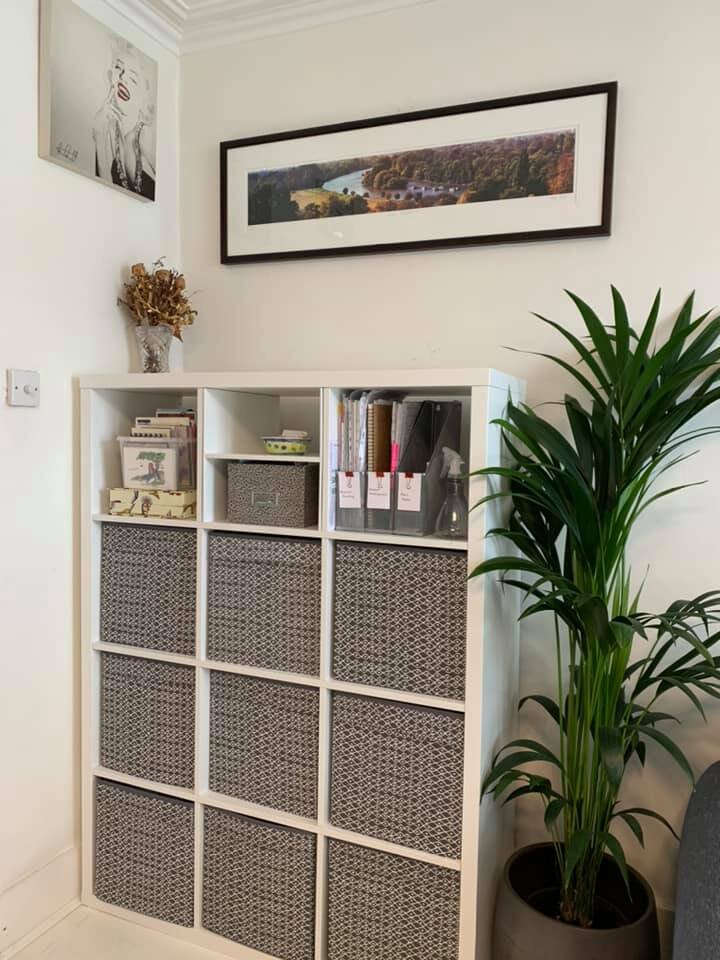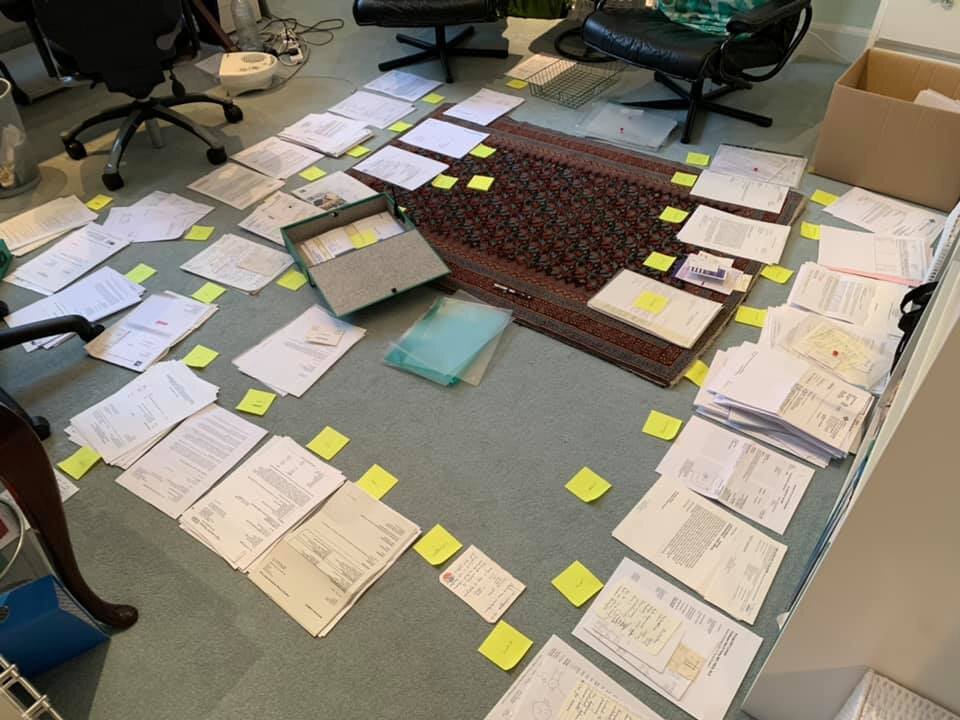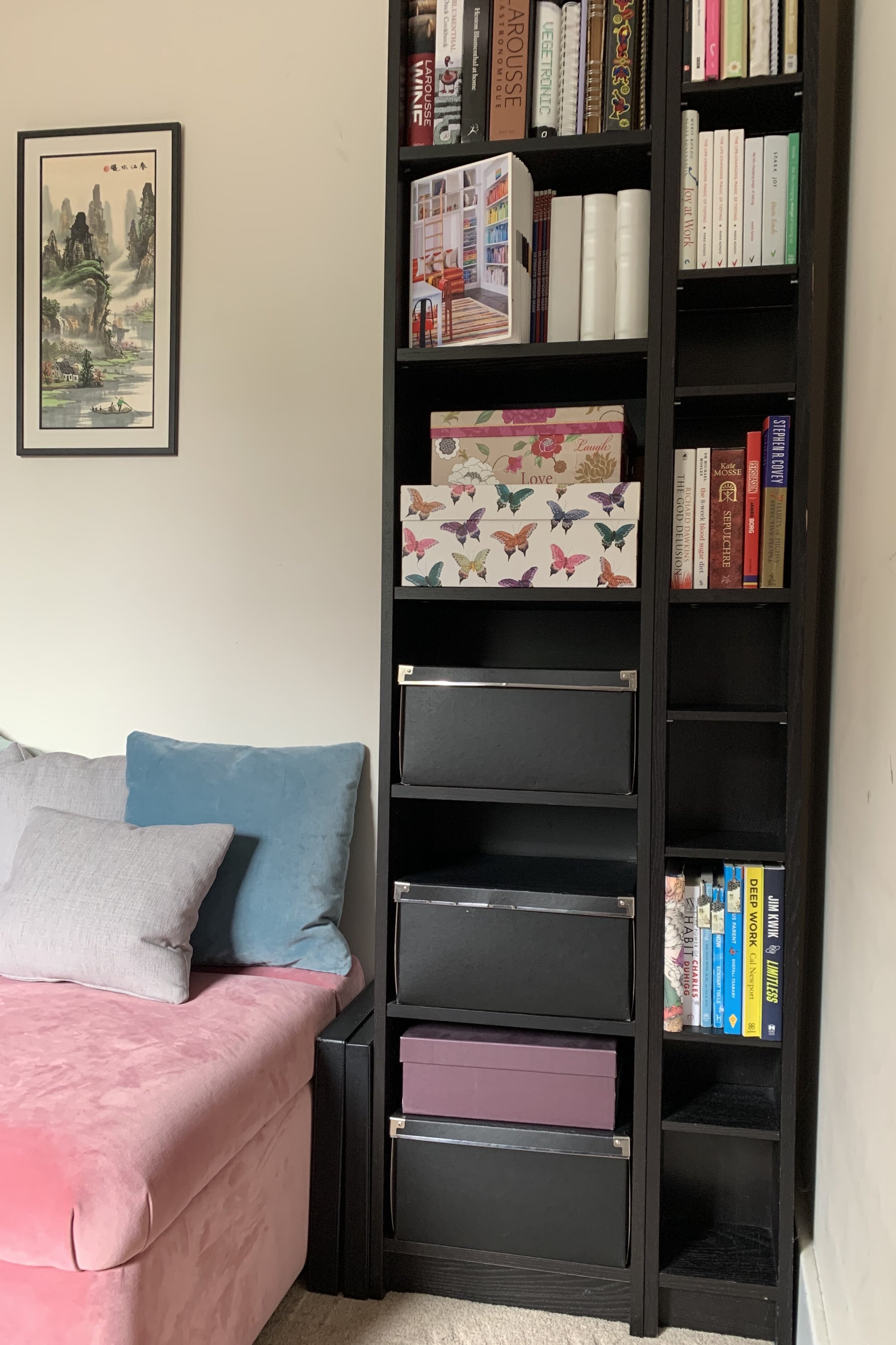Drowning in Paperwork? Let's Tidy!
Papers. Out of all of the items that live in your home, papers are one of the biggest culprits at taking up space right? Do you shudder when I ask: ‘How many papers do you think are in your home right now?’ If you feel a sense of unease or even dread when I ask this question, you’re not alone. Whenever I present KonMari workshops to corporate clients and pose this questions to the attendees, the subject of paper clutter is almost always met with an overwhelmingly negative response.
Why is paper clutter such a problem? I’ve come to believe there are three main reasons why papers are so difficult to keep under control:
Client GF Before - Papers get everywhere!
They NEVER stop coming into the home. Papers are unlike every other KonMari category. In all other categories, it’s easier to maintain a sense of order because you have more control over how many clothes, books, kitchen items, toys (mmm, maybe!) and sentimental items you have in your home at one time. But papers, they are sent by others and given by others. We don’t actually have a say on how many papers we can expect to see on our doorstep after the morning post and we can’t control the number of school papers and work papers that smuggle their way into, what should be, our sanctuary.
There get EVERYWHERE. Cluttering up the kitchen counter. Scattered throughout your work space. Behind furniture. Stuffed in drawers. Overflowing from the paper organisers you invested in a few years ago with the intention to finally solve ‘that paper problem’ in your home. The strangest place I’ve ever found papers with a client was in his freezer! True story.
I believe papers are a silent, seemingly innocent foe. How can a single sheet of paper become such a catalyst to spark off an anxiety that we’ve lost control? The answer: one sheet of paper isn’t such a threat on its own, but combine this sheet with the other seemingly innocent 10,000 sheets of paper in your home, and there’s your trigger. One single piece of paper can act as a constant reminder that the papers in your home are taking over. And for many of us, we just don’t know where to start.
If any of the above scenarios resonate with you, fear not. I’m here to help you. I’m going to share with you the steps I take with my clients so you can get a handle over your papers once and for all. But most importantly, I’m going to share how you can use this ‘reset’ as a unique opportunity to create a simple system that is easy to maintain moving forward. There’s no point in investing your time and effort into organising your papers unless you’re going to feel empowered to keep your never-ending cascade of papers under control in the future. That’s why, following the discarding phase, creating a simple paper storage system is key.
Before we begin, there’s one thing I need you to understand: Tidying your papers will take time. This is probably obvious but the more papers you have, the longer it will take (unless you decide to throw them all away without even looking at them! FYI, I am not recommending this!). I’ve had clients that have tidied their papers and set up a system in under two hours and I’ve supported clients who have taken up to 25 hours (yes, five whole tidying sessions) to successfully tidy their papers.
Still not convinced tidying your papers is worth the effort? Let me try and convince you by sharing a few before and afters:
Client RP - Papers Before
Client RP - Papers After (my client and her husband worked together to tidy their papers in under two hours)
Client JD - Papers Before
Client JD - Papers After (time taken to tidy papers = 10 hours)
Creating a simple storage system for papers is key (beautiful papers inserts are optional!)
Client JC - Papers Before
Client JC - Papers After (time taken to tidy papers = 5 hours)
Client AF - Papers Before
Client AF - Papers After (from left: pending, short-term keep & long-term keep) Time taken = 6 hours
Client RR - Papers Before
Client RR - Papers After (time taken = 8 hours)
Client RR After - All the magazine holders left over after discarding unnecessary papers!
Client CA - Papers Before
Client CA - Papers After (my client decided to invest in a whole new storage unit to celebrate her freedom from paper clutter! Time taken = 25 hours!)
STEP ONE: Let’s investigate what we think is there before we go on a paper search… What is the content of the papers that fill your home? Personal papers or work papers? If you have both currently stored in your home, it’s important to distinguish what’s personal and what’s work related first. You don’t want to deal with both types of papers simultaneously. Instead, focus on tidying one area at a time; you’ll thank me for it, I promise!
STEP TWO: Gather all of your papers in one spot. That’s right, as terrifying as this sounds you’re going to go on a paper hunt around your home and bring them all to one location. If you have a lot, my recommendation is to bring your papers to a space, which you can (hopefully) ‘shut off’ once you’ve reached your paper tidying limit for the day. Some of my clients use a spare bedroom or office (providing they won’t be distracted by the papers yet to be tidied if they have to work in it). Seeing all your papers in one space can be overwhelming so if you can shut the door on them (or even just drape a large blanket over them!) when you’re not going through them, this can make a big difference to your wellbeing during your downtime. Not many people like to have a constant visual reminder of an unfinished job!
TOP TIP: If you find a document still in its envelope, open it and discard the envelope straight away, along with any leaflets and/or junk mail inside. You can reduce up to 50% of your paper content before your keep or discard checks!
STEP THREE: Go through your ‘keep or discard checks’. When it comes to the paper category, I don’t ask my clients ‘Does this piece of paper spark joy?’ If I did, I’d probably be laughed out of their home. Whenever does a piece of paper actually spark joy?! So with papers, it’s all a question of practicality: ‘Do I need this paper for a specific purpose in my life moving forward?’ Air of the side of caution of keeping a document ‘just in case’. Often, in these situations, if you haven’t needed the document up until this point, then you’re probably not going to need it in the future.
Katrina's Voucher Box
TREAT BOX: Every time I support clients with their papers, we always find unused gift cards, money, un-cashed cheques (yes cheques still exist!), vouchers and coupons. To ensure that they don’t get lost during our quest for paper storage perfection (they’re some of the smallest papers after all!), find a small box to put them in so you can find them (and use them) when you want to. Even better, one client treated herself and used the gift card the day she found it, as a reward for going through five hours of tidying her papers. She had forgotten the gift card even existed - what a lovely discovery!
BEWARE: When you’re going through your papers, if you come across any sentimental papers (cards, family artwork, postcards, photographs etc.), unless you know you want to discard them within two seconds, pop them into a sentimental box or tray straight away. These items can really slow down our progress. Be honest: how many times you’ve tried to organise your papers and been sidetracked by a stack of photographs you forgot you printed or a stray photo album? It’s best to treat any sentimental papers you find as a potential distraction to your paper tidying flow and move them aside for now. You can always come back to them when the time is right to go through your sentimental items.
Client CS - Paper subcategories
STEP FOUR: As you find the papers you want to keep, create piles of similar papers and write out a post-it to classify these papers temporarily. These are your paper subcategories. Some of the most common examples include:
Mortgage
House documents
Tax
Insurance
Medical / Health
Documents for each family member
Work
Qualifications
Achievements
Finance
STEP FIVE: This is where we start to create a simple system. This is central to maintaining the organisation we put in place moving forward. It’s time to organise the papers in each subcategory, one at a time, into three main categories:
Pending Papers: These are papers that need to be referenced or dealt with ASAP (the next couple of days or weeks). Examples include a bill that needs to be paid, an invitation you need to respond to, documents you need for an event taking place in the next month etc.
Short-term keep papers: These are papers you need to keep for a short period of time, and are often replaced year on year. Examples include council tax documents, bank statements, insurance documents etc.
Long-term keep papers: These are the papers you need to keep for an extended period of time, if not forever. Examples include birth certificates, marriage certificates, proof of purchase for valuable items etc.
STEP SIX: Store your papers in an easy to manage system. Personal preference comes into play here because some of my clients like to have all of their papers hidden out of sight in folders (separated into short-term keep and long-term keep of course) whereas other clients like to use a filing cabinet with drop down files.
My husband and I buck the trend altogether (and go against Marie Kondo’s paper storage advice - apologies Marie!) by storing our papers in folders in storage boxes, that fit onto our shelves. Why? Because we don’t want to see any of the short-term keep or long-term keep papers we’re holding on to. For pending papers, we have a drawer in our office where we store them temporarily. Often, our pending papers total less than 5 at one time because we try to deal with the papers as soon as they come in (in an effort to complete that ‘task’ and send it on its way and out of our home). That said, I’m more on top of my papers than my husband is, and better at filing long-term papers and short-term papers away (sorry darling, but I am), which means my husband’s papers tend to accumulate on the kitchen windowsill and/or in the office. My solution? I’ve designated him his own small box (I believe almost every tidying problem can be achieved by a box!) and if I see one of his papers has been there for a while, then I pop it into the box so it’s out of sight but somewhere where he is able to find it easily. Examples include his letters, recipe cut-outs and receipts.
TOP TIP: If you can, try to store your paper storage system as close to the front door as possible. The two biggest victims of paper clutter are the kitchen and/or living room. If you can successfully get into the habit of dealing with your papers as soon as you come in through the door (opening them, recycling them, putting them in a pending tray or storing them in your short-term keep/long-term keep) this can make a big difference. Often, this only takes between 5-10 minutes at the most. Isn’t it worth a little bit of time each day to maintain the system you put in place to avoid drowning in papers again? If you agree, shout a ‘yes’ into your screen!
I’m aware I’ve written a lot of content about managing your paper clutter in this post and through my fear of overwhelming you entirely, I’m going to share my advice on maintaining your paper system, along with my tips on how to reduce the amount paper clutter coming into your home in my next blog post. Until then, I wish you the best of luck tidying your papers. Please know you’re not alone in the quest for paper dominance; if you find yourself in a paper clutter nightmare and have no idea how you’re going to conquer your paper ‘Everest’ on your own, please feel to reach out to me or book a paper tidying session.
Inspired? Deflated? Motivated? Confused? If you enjoyed this post (or feel completely overwhelmed by it!) please drop me a comment below, I’d love to hear from you.


